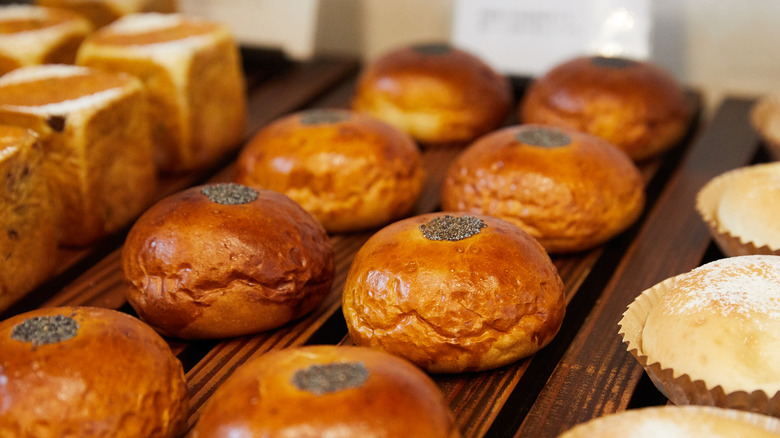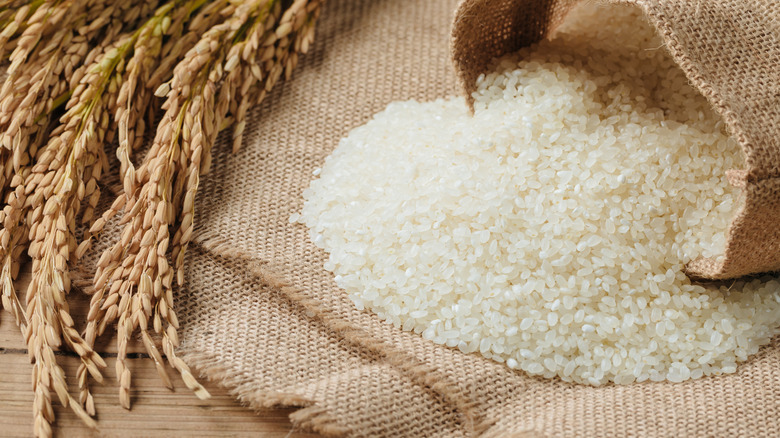How Japan Started To Veer Away From Rice And Embrace Bread
For thousands of years, rice has established itself as a major staple in Japan. Rice, which is called "gohan" in Japanese, was historically the main feature of nearly every meal. However, The Guardian reports that a significant shift in Japanese culture is causing a change.
The shift began in 2011, marked by increased bread purchases. In fact, that year, more money was spent on bread than rice. This was caused mainly by lifestyle changes, with people in need of food that's not only fast and convenient but also affordable. However, the internationalization of Japanese cuisine also meant more variety was introduced to foods like bread and pasta.
Today, you'll find an array of Japanese recipes that feature noodles, such as ramen, sprinkled among more traditional rice dishes. This is leading to a changing food culture in the country, although rice continues to hold an essential place in the hearts of Japanese citizens.
The history of bread consumption in Japan
Although bread is becoming more popular, rice has been essential in Japanese history for thousands of years. It's thought to have come to Japan via China around 2,500 years ago, and since then has been a staple in the Japanese household.
Interestingly enough, it wasn't until the 16th century that bread came to Japan. This new food was brought over by Portuguese missionaries but remained a reasonably uncommon meal in Japan until the Opium Wars in the 1800s. During this time, the Japanese military began adding bread to rations because it was easy to eat in the fields and could last longer than other perishables.
The use of bread in Japanese rations continued into World War II, and slowly, the idea of eating bread outside the war setting began to take hold. Although in 1962 rice consumption was at an all-time high, by 2002, people were consuming far more bread than rice. That brings us to where we are today, with bread replacing rice.
How the move away from rice is affecting Japan
The increasing consumption of bread and the move away from rice is showing some interesting results in Japanese society. Since including rice in cuisine is declining, rice producers have had to look outside the country for ways to continue earning an income.
This means that Japan's rice exports have risen by about five times over the past 10 years. Although rice gets exported to countries all over the world, the majority of it is sent to Hong Kong.
Despite the increase in rice exports, however, it still may not be enough to stop the decline of rice production in Japan. To help prevent it from losing value in the country, restaurants are encouraged to serve more rice-based dishes to help get local consumption back up.
Only time will tell whether this campaign will work and help maintain rice's place of importance in Japan or whether it will slowly fade out of Japanese food culture altogether.


